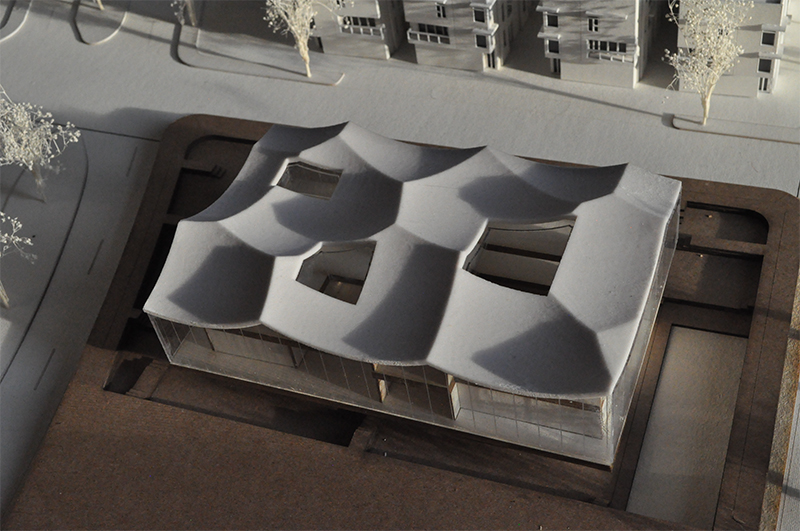The Texas A&M University College of Architecture organized a student design contest in Fall 2016, seeking uses for the standardized waste products produced by the auto manufacturing industry. The competition brief tasked students with putting scrap sheet metal to use in designing a Houston-based Museum of Waste. The museum would be small, less than 30,000 sf, and dedicated to explaining how design can help reduce waste.
Working in partnership with General Motors, the students were provided with information about the tremendous amount of scrap sheet metal — known as offal — that is produced from stamping out car parts. John Bradburn, GM’s Global Waste Reduction Manager, served as one of the members of the jury, along with chair Ryan Jones, AIA, an associate partner at Lake|Flato Architects; co-chair Kendall Clarke, an intern at Corgan; Gary Davis, director of marketing at Zahner; and Andrew Mangan, executive director of the U.S. Business Council for Sustainable Development.
“There was a lot of elegant work produced as part of this competition, and for that, all the students should be commended,” said Jones. “Many projects showed extensive abilities in areas outside of the primary interests of this competition, and we want to assure those students that their ideas were noticed and appreciated. The winners were those who embraced the brief, integrating the sheet metal appropriately and efficiently.”
Yingzhe Duan was awarded first place for a project that was functional, practical, and replicable. Jones notes, “We were excited about the ability of this concept to be uniquely studied for each of the offal patterns available and felt that its ability to be mass-customized and fabricated was not just possible, but very likely.”
Panwang Huo, the contest’s runner-up, integrated the material while creating a well-designed museum experience. The jury commented that they “appreciated the elaborated design of structural and daylighting systems within the building and their ability to showcase sustainable systems design while also creating wonderful programmatic experiences.”
TAMU Assistant Professor of Architecture Ahmed Ali organized the competition and has plans for many more. “I think there is a lot of benefit to the profession and also to the students to raise their independent thinking through an annual competition,” he says.
The brief created challenges, forcing students to bring together a wide array of different skillsets to create successful designs. “They learned to think unconventionally, now that the design is tied to a real problem and in particular the problem of waste,” Ali says. “The other thing is to come up with a solution that’s not theoretical but practical. It’s actually addressing a major environmental issue, and at the same time they are exploring the opportunities that we call synergy between two different industries. Business opportunities might emerge out of the power of design.”
Alyssa Morris is web editor of Texas Architect.





1 Comments
The concept is striking and I applaud the student for winning this contest. However, what this resulting design signals to me is that architecture schools are failing to teach its students to care about the human form and human experience at the street level. As with this design, these large-scale projects look great from the perspective of a bird or plane, but are almost entirely inhospitable to people at the sidewalk. This has been true since the mid-20th Century since we started caring more about the skyline than our eyeline. We have got to do better than this.